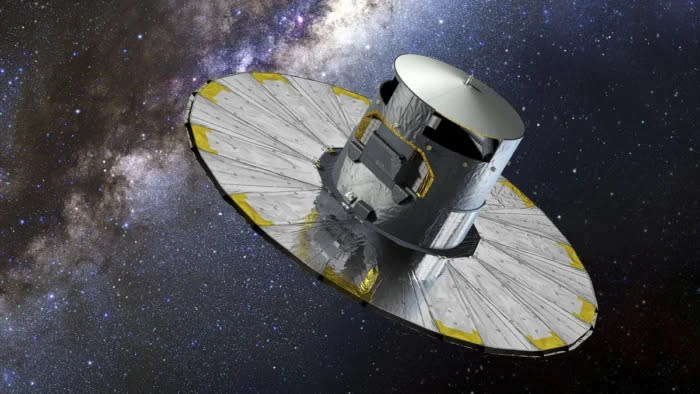Milky Way’s Biggest Black Hole 33 Times Bigger Than Our Sun
In the career of an astronomer, it’s hard to overstate the scale of a recent find by a team at Chile’s Very Large Telescope (VLT).
Pasquale Panuzzo, a research engineer and lead author of the team’s recently released work, certainly didn’t.
“It’s a real unicorn. This is the kind of discovery you make once in your research life,” Panuzzo said in a statement by the European Southern Observatory. “So far, black holes this big have only ever been detected in distant galaxies.”
How big is the Milky Way’s newest known black hole? About 33 times the size of the sun — about 50% bigger than the previous galactic record-holder.
Largest black hole of its kind
Gaia-BH3 is the largest black hole of its kind — one formed from a supernova — in our galaxy. Only Sagittarius A, the gravity vacuum the Milky Way rotates around, is bigger. But unlike Gaia-BH3, it didn’t come from a stellar explosion.
An extensive European Space Agency team led by Panuzzo submitted its findings to the journal Astronomy & Astrophysics earlier this month. They detail the colossal structure, which they’ve never properly seen through the VLT or other instruments, but can infer to exist based on the movement of a lone star known to be its companion.
The astronomers said more finds like Gaia-BH3 could await. The black hole orbits a location relatively near Earth, at only 2,000 light years away. Because the companion star’s activity triggered the discovery, the door to others like it is wide open.
The Milky Way hosts around 50 confirmed or suspected black holes. But there could be thousands or millions more, based on how many stars have likely died in the galaxy’s 13.6-billion-year history.
More discoveries to come
The next wave of data from Gaia, the space telescope mapping the Milky Way, could reveal more black holes like Gaia-BH3. It’s slated for early 2025 at the earliest, which partly explains why the current team decided to release its discovery early.
“We took the exceptional step of publishing this paper based on preliminary data ahead of the forthcoming Gaia release because of the unique nature of the discovery,” co-author Elisabetta Caffau said. Now, other astronomers can get a jump start on any opportunities to find similar new black holes.

Titanic as it is in our galaxy, Gaia-BH3 is a blip on the universal radar of black hole size. One supermassive black hole currently careening through space is as big as 20 million suns.
The post Milky Way’s Biggest Black Hole 33 Times Bigger Than Our Sun appeared first on Explorersweb.

